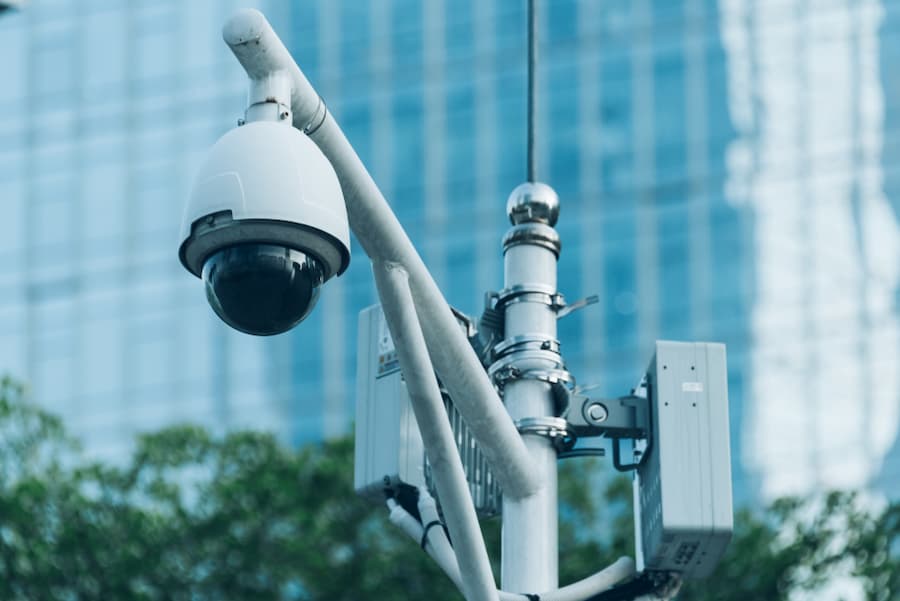Safety is a concern for homeowners, therefore security camera systems are a strong and easy method to monitor their homes. These systems allow homeowners to monitor their property, deter intruders, and gather evidence in case of a crime. As smart technology and the internet spread, home security camera systems have transformed. They are smarter, more effective, and easier to use. This article details how security camera systems protect houses, their components, and how they might aid modern homeowners.
Contents
Core Components of a Home Security Camera System
Security camera systems include various components that work together. Cameras, recording devices, storage, communication infrastructure, electricity, and user interfaces are examples. To keep the system running well, each portion is crucial.
Real-time video cameras are the system’s eyes. They can record HD, infrared, wide-angle, or panoramic, depending on the type. Digital IP cameras offer higher resolution and function better with other devices than analogue cameras in most current systems.
DVRs and NVRs record and store camera footage. DVRs use analogue cameras, whereas NVRs use IP cameras and offer more advanced control and access.
Many storage systems have built-in hard drives for DVR/NVRs or cloud storage that allows you to view and backup content remotely. The connection infrastructure includes cables, routers, and wireless networks that link cameras to recording and monitoring devices. Batteries, electrical connections, or PoE configurations provide power. Moreover, homeowners may see live streams, alter settings, and view recorded footage via a smartphone app, desktop software, or web browser. These cameras are also vital for commercial access control systems.
Types of Home Security Cameras
Each type of security camera is suitable for a certain circumstance. The most common types of cameras include indoor, outdoor, wireless, wired, doorbell, and PTZ. Many interior cameras are tiny and discreet, yet they frequently incorporate motion detection, audio recording, and two-way communication. However, outside cameras can withstand weather and vandalism. Waterproof and night-vision cases are typical.
Wireless cameras are easy to set up and can be put anywhere, making them more popular. By connecting to the home’s Wi-Fi network, these devices may transfer data wirelessly. They need batteries or power wires for electricity. Wired cameras are tougher to set up but give a more reliable connection and are less impacted by other signals.
Doorbell cameras combine a doorbell with a camera and microphone. They allow homeowners to use their phones to see and chat to visitors. PTZ cameras can zoom and move from afar, covering more land than fixed-angle cameras.
How Data Transmission Works in Camera Systems
Data transmission is crucial to security cameras. Data from a camera must be transferred to a recording device or cloud storage to be processed and seen. A wired arrangement uses coaxial connections for analogue cameras or Ethernet cables for IP cameras. These lines send video to a DVR or NVR.
Wireless systems deliver data via Wi-Fi, Zigbee, or Z-Wave. For proper operation, these systems need a secure network. Video may be blurred due to outages or bandwidth constraints. This data is usually encrypted. Thus, unauthorised parties cannot intercept or alter video broadcasts.
You may submit data to cloud storage services to access it anywhere with an internet connection. This is useful for homeowners who travel or have many properties. These solutions work better with real-time alerts and notifications that notify you of suspicious activity.
Power and Backup Systems
Security cameras require constant electricity. AC adapters or Power over Ethernet (PoE) installations transmit power and data over one Ethernet connection to most wired systems. Usually, wireless cameras use batteries or solar panels. Battery-powered gadgets are versatile but need frequent charging or replacement.
Power outages may compromise security systems without backups. Many high-end systems have UPS or battery backups to keep cameras and recording devices running when the power goes out. This ensures surveillance even in inclement weather, when crime is highest.
The Role of Artificial Intelligence and Smart Technology
Smart technology and AI have improved home security camera systems. AI systems can detect faces, distinguish humans, animals, and inanimate objects, and notice odd conduct. This reduces false warnings and focuses on real hazards.
Smart cameras work with smart locks, lights, thermostats, and alarm systems. If a camera detects nighttime movement, it may turn on the exterior lights and alert the owner. Connecting it to Alexa or Google Assistant allows you to control it hands-free and get status updates.
Learning allows these systems to improve over time. They may observe family behaviour and identify unusual behaviour. This proactive security method enables homes to prevent problems.
Benefits of Security Camera Systems for Home Safety
Home security cameras have several benefits. Most importantly, they prevent wrongdoing. Just having cameras around helps deter burglars and vandals. Video footage may aid investigations and prosecutions after a crime.
Security cameras can improve mental health. Homeowners feel safer knowing they can monitor their home and family 24/7. Many individuals using cameras in a community may minimise crime and encourage cooperation.
Monitoring service personnel, delivery, and maintenance may avoid fraud or harm. Cameras may help families monitor children and elderly relatives while they’re alone.
Last Thoughts
With more control, sight, and deterrence than ever before, security camera systems have transformed home security. From basic monitoring to fully integrated smart systems, these technologies help individuals actively safeguard their homes and loved ones. A well-designed security camera system may provide you peace of mind and protection in a bustling city or quiet neighbourhood.
Visit The Incest Flix for more informative blogs.


